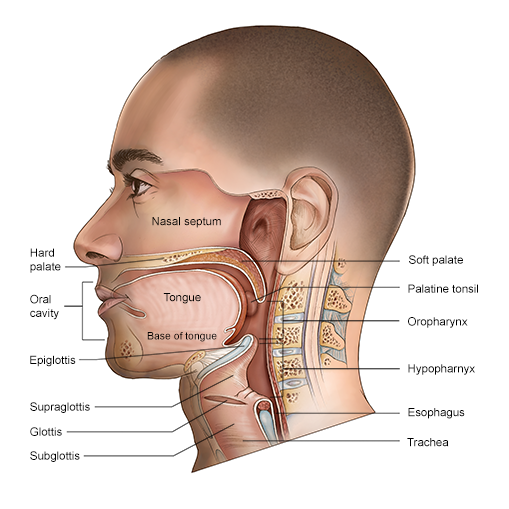Approved by the Cancer.Net Editorial Board, 09/2022
ON THIS PAGE: You will find a drawing of the main body parts affected by head and neck cancer. Use the menu to see other pages.

This illustration shows areas where head and neck cancer can develop. The oral cavity includes the lips, the front of the tongue, and the hard palate, or roof of the mouth. The oropharynx begins where the oral cavity stops. It includes the soft palate at the back of the mouth, the tonsils, the base of the tongue, and the part of the throat behind the mouth. The lower part of the throat is called the hypopharynx. It surrounds the larynx. The larynx is a tube-shaped organ located in the front of the neck and at the top of the windpipe or trachea. It contains the vocal folds (vocal cords) and is made up of three parts. The middle section, or glottis, contains the vocal folds. The supraglottis is the area above the vocal folds. The subglottis is the area below the vocal folds that connects the larynx to the windpipe, or trachea, a hollow tube that carries air to the lungs. A flap of tissue called the epiglottis helps protect the airway and prevent food from entering the trachea during swallowing.
The next section in this guide is Risk Factors and Prevention. It describes what factors may increase the chance of developing head and neck cancer and ways to help reduce your risk. Use the menu to choose a different section to read in this guide.
